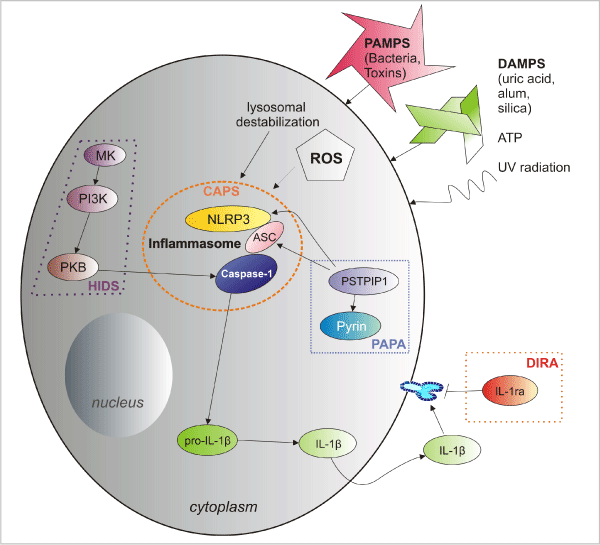
 |
| Figure 1: NLRP3 inflammasome and selected monogenic autoinflammatory diseases. Several endogenous and exogenous danger signals, such as urate crystals, asbestos, alumn, silica, ATP, amyloid β, as well as bacteria, toxins, fungi and a variety of others, activate the NLRP3 inflammasome. The exact pathway, how these stimuli lead to NLRP3 activation is not known yet. However, reactive oxygen species (ROS) and lysosomal destabilization seem to be involved. The selected monogenic autoinflammatory syndromes result in activation, of the caspase-1 complex. In CAPS, mutations in NLRP3 result in increased assembly of the NLRP3 inflammasome and active caspase-1 through interactions with ASC and procaspase-1. In PAP, mutations in PSTPIP1 lead to prolonged binding of PSTPIP1 to pyrin and impairment of pyrin function. In FMF, mutant pyrin is pro-inflammatory in some conditions and results in caspase-1 activation. Active caspase-1 then cleaves pro-IL-1β into its biological active form. Secreted IL-1β can act through binding to the IL-1RI. IL-1 receptor antagonist (IL-1ra) is a naturally occurring IL-1β antagonist. Mevalonate kinase may modulate inflammasome activity through Rac1/PI3K and PKB pathway. |